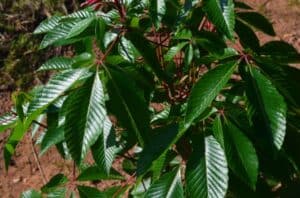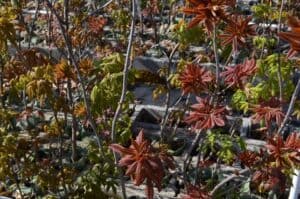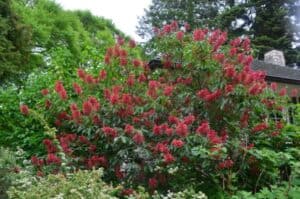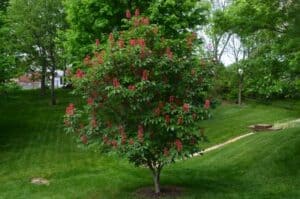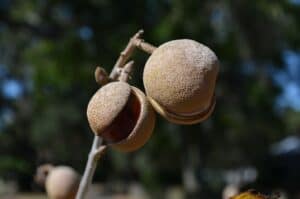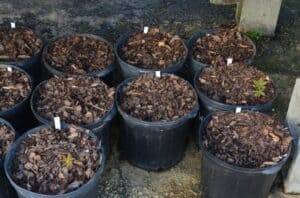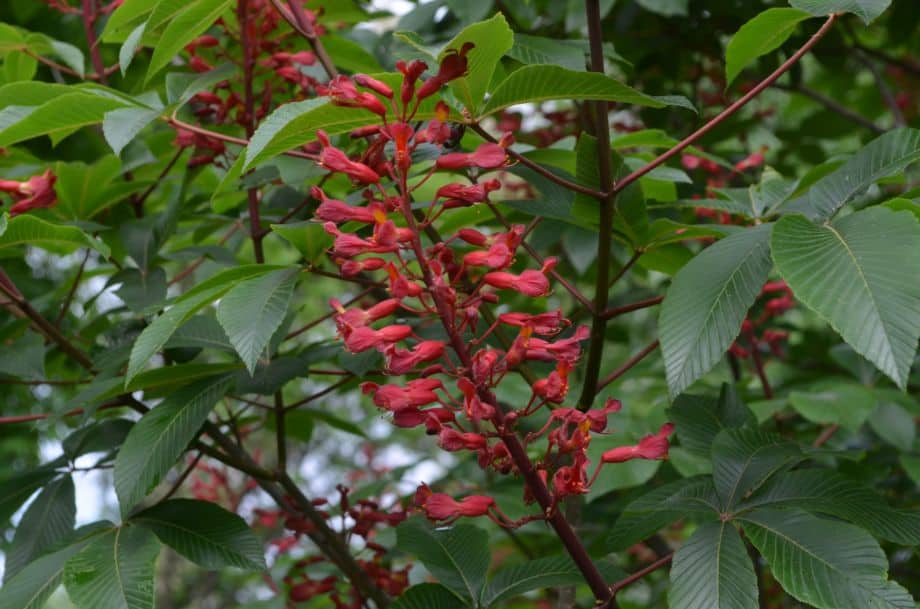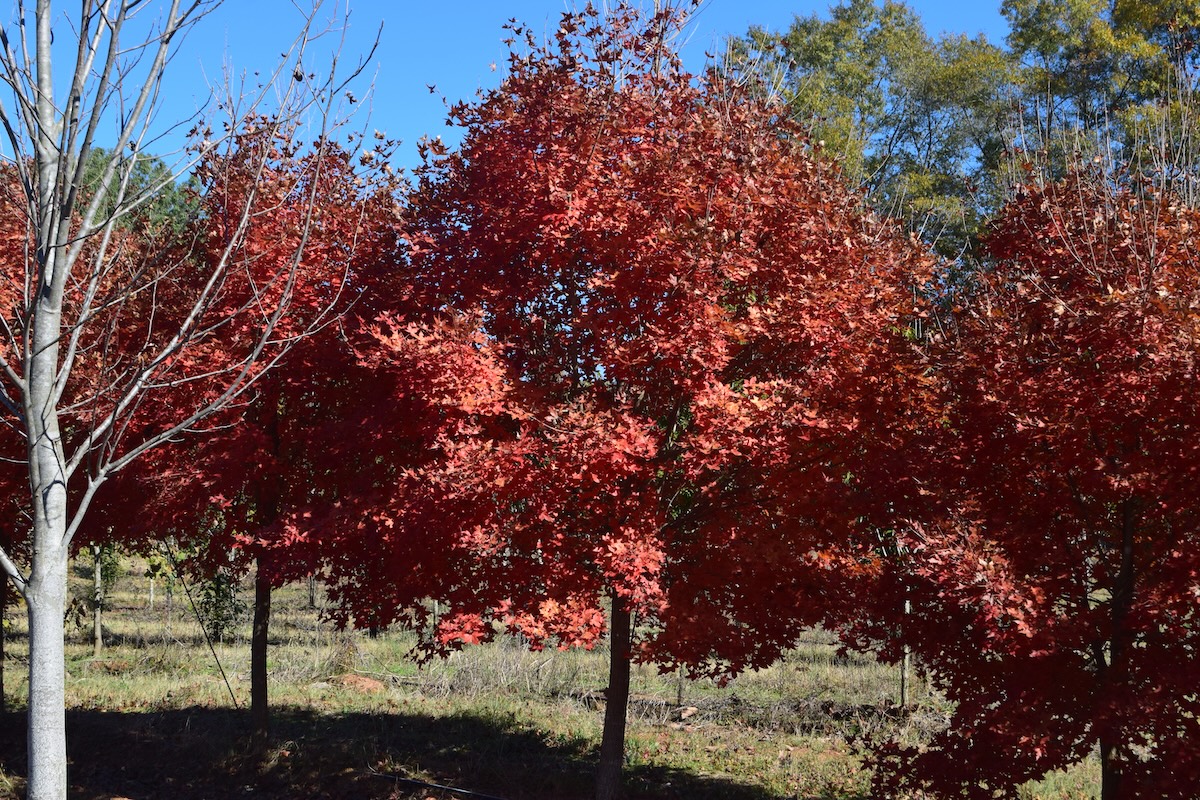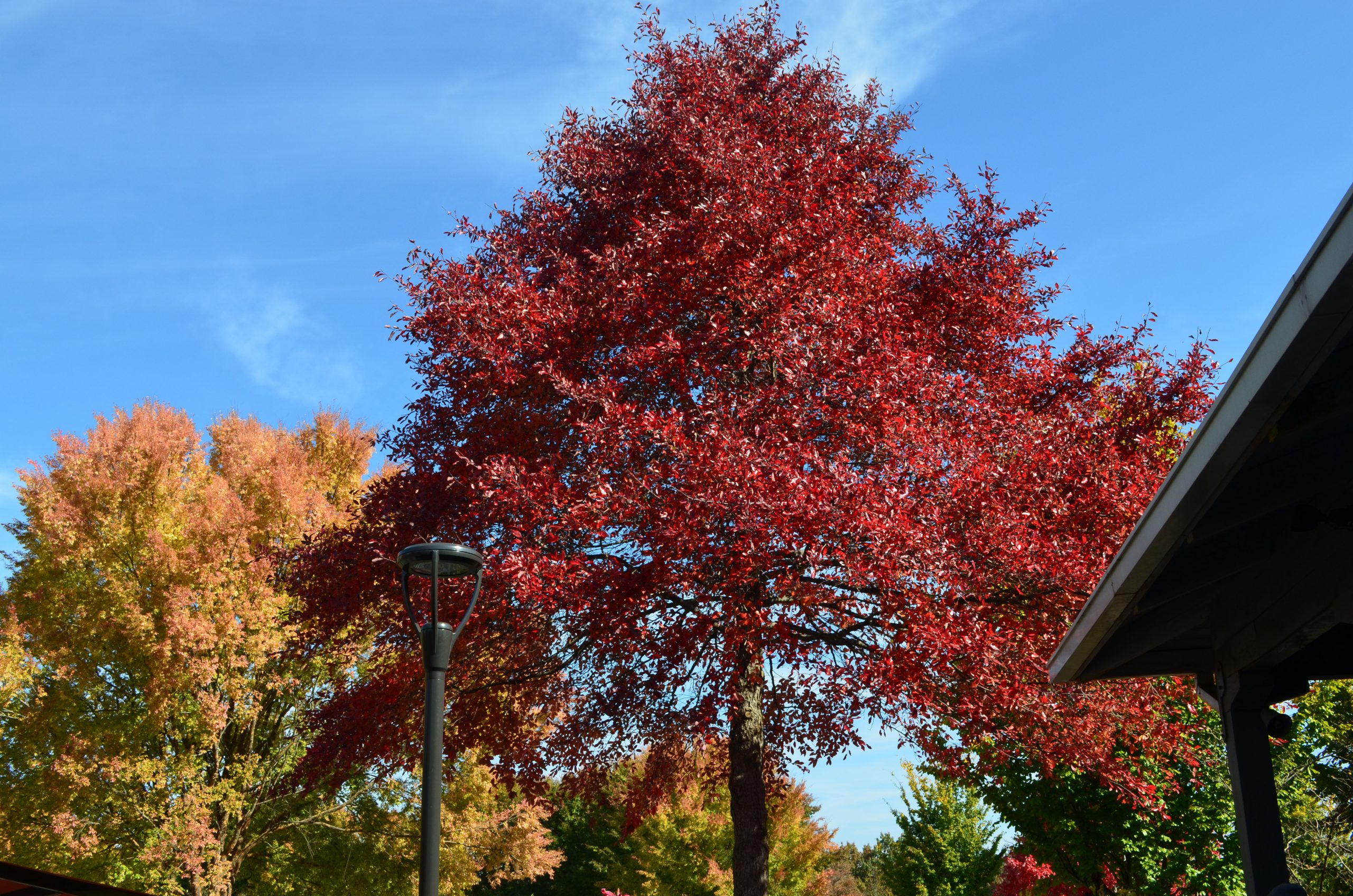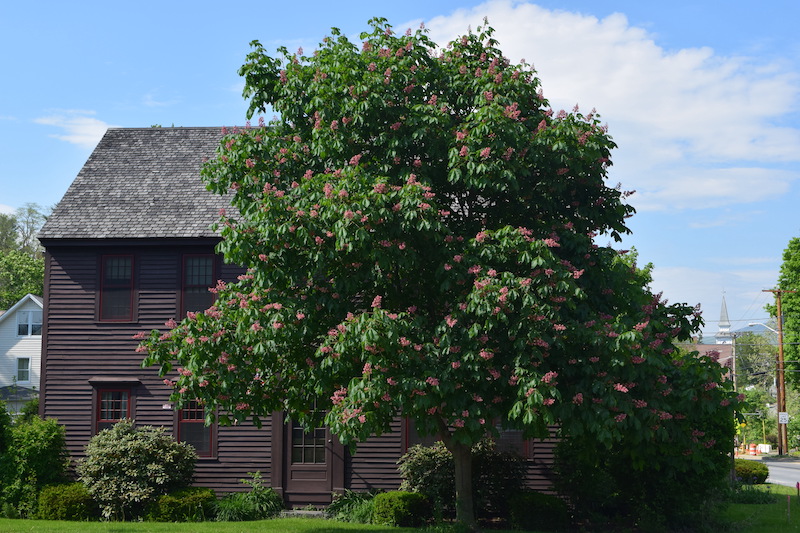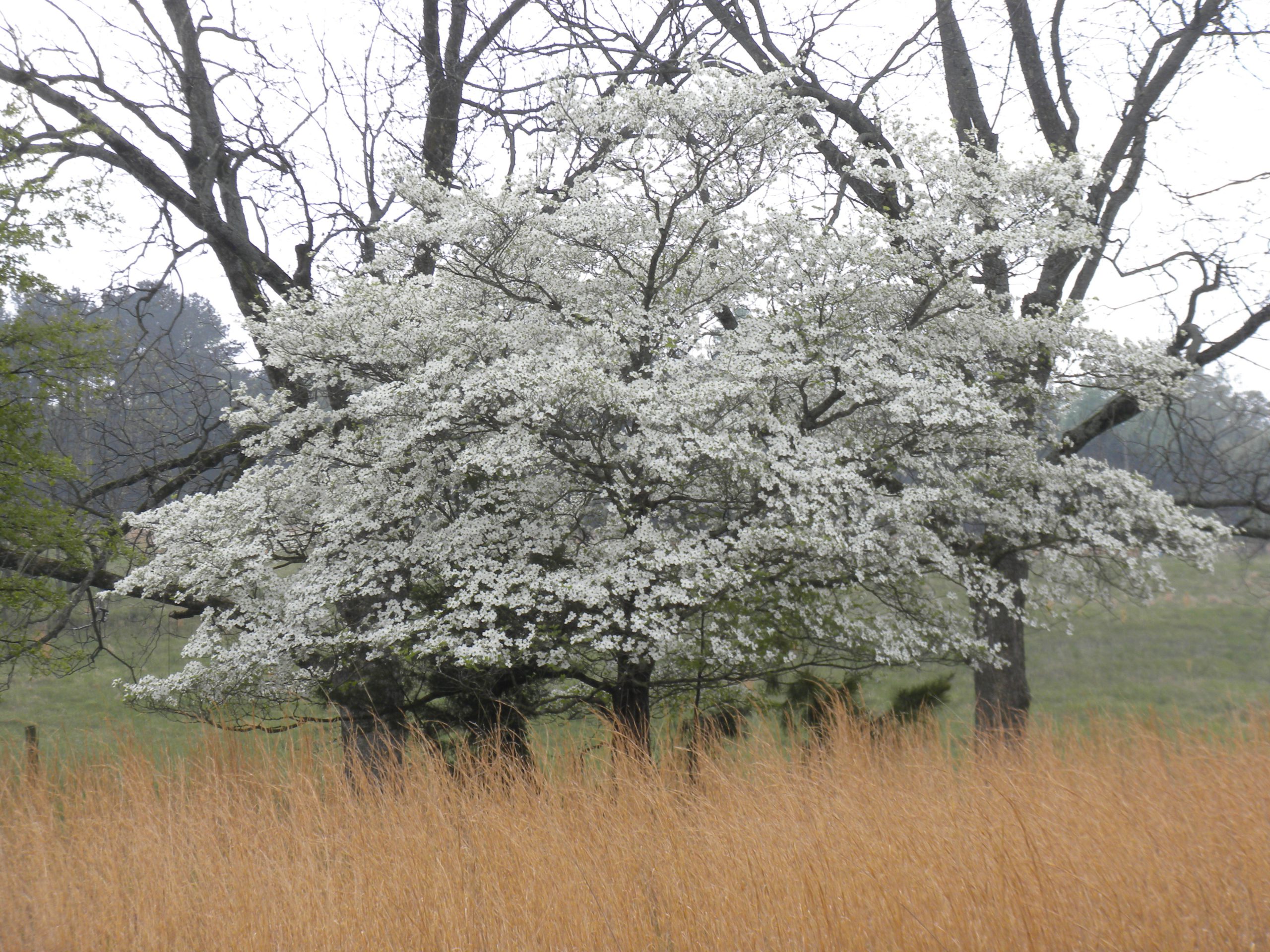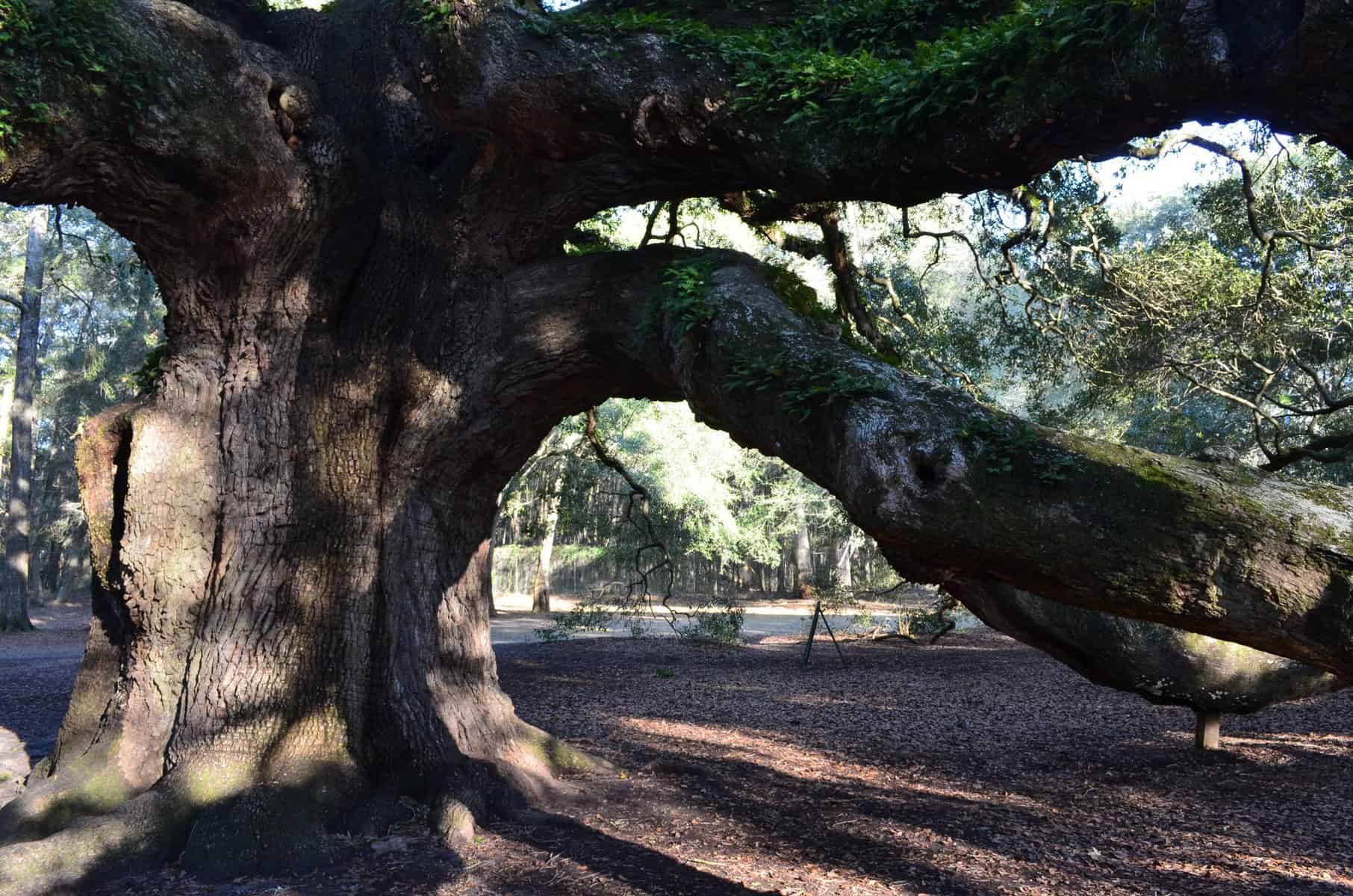The red buckeye is among the most beautiful eastern North American tree species, especially in flower, when the brilliant red panicles glow in the woodsy understory. The species occurs naturally in pinela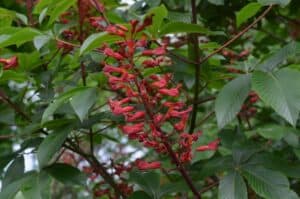 nds, pine-deciduous woods, wooded bluffs, stream banks and bottomlands throughout the range. The USDA Plants Database shows distribution in the wild from North Carolina to Florida west in an arc to West Virginia Kentucky, southern Illinois, southeast Missouri dipping into Texas. I observed numerous plants along coastal South Carolina and Mobile Bay, Alabama, growing in sandy soils. Based on the southern distribution, one could assume lack of hardiness, yet plants in gardens and arboreta survived -20°F and below. Spring Grove Arboretum, Cincinnati, OH, has many beautiful specimens that have experienced below -20°F through the years. The species is successful at the Morton Arboretum, Lisle, IL, which in the 2018-19 winter recorded -24°F. The Minnesota Landscape Arboretum, Chanhassen, MN, grows ‘Atrosanquinea’, a bright red-flowered cultivar.
nds, pine-deciduous woods, wooded bluffs, stream banks and bottomlands throughout the range. The USDA Plants Database shows distribution in the wild from North Carolina to Florida west in an arc to West Virginia Kentucky, southern Illinois, southeast Missouri dipping into Texas. I observed numerous plants along coastal South Carolina and Mobile Bay, Alabama, growing in sandy soils. Based on the southern distribution, one could assume lack of hardiness, yet plants in gardens and arboreta survived -20°F and below. Spring Grove Arboretum, Cincinnati, OH, has many beautiful specimens that have experienced below -20°F through the years. The species is successful at the Morton Arboretum, Lisle, IL, which in the 2018-19 winter recorded -24°F. The Minnesota Landscape Arboretum, Chanhassen, MN, grows ‘Atrosanquinea’, a bright red-flowered cultivar.
The species is utilized as an understory plant in the Dirr garden, residing in the towering canopy of white oak, tupelo, and sweetgum. In this shade environment, trees are smaller and more open. Flowering is moderated a degree but still respectable. The habits of open-grown trees vary from oval-rounded to rounded, usually clothed with dense branches and large compound palmate leaves. Landscape size ranges from 15 to 25’ in height with similar spread. The National Champion (2019) was 48’ high and 37’ wide and resided in St. Louis, MO. I was asked many years past how I determined tree sizes in the Manual of Woody Landscape Plants. I typically reduced champion sizes by 50%. Not a bad rule of thumb for landscape sizes.
The foliage is beautiful, especially the early emerging leaves in riotous colors of green, purple-green, purple, yellow, orange, red, bronze and other permutations (see photo). The effect is ephemeral for the foliage soon becomes shiny dark green. Fall color is yellow at best, assuming there are persistent leaves. The anthracnose/blotch often defoliates trees by late summer. Each leaf is composed of 5 to 7, doubly serrate leaflets, to 6” long.
Flowers, pure red in the best incarnation, open with the emerging foliage in late April (Athens). They remain effective for two weeks or longer, depending on temperatures. The individual tubular flowers, 11/2 to 2’” long, are borne in a 6 to 8” long panicles at the ends of the shoots. Flowers are pollinated by the ruby-throated hummingbirds. A tree in resplendent flower is the tonic of spring. Red buckeye hybridizes with A. flava, A. glabra, and A. sylvatica, the result a mixed bag of flower colors.
The fruit is a large, smooth-skinned dehiscent capsule with one/two shiny rich brown seeds. As soon as the capsule starts to split, they should be collected and the seeds removed. Plant immediately as seeds will quickly wither. I sow seeds in 3-gallon containers filled with pine bark, cover with one-inch of bark, protect from predators, and leave outside. The root radical emerges soon after planting; the shoot the following spring. The seedlings are divided in late fall, tap root pruned, and transplanted to 3-gallon containers. The seedlings often flower in the second or third year.
Certainly, an adaptable species and can be grown in acid or high pH, sandy to clay-based soils with moderate moisture. Does show drought stress and requires supplemental water. The worse-case scenario is the leaves abscise but the tree bounces back the next year. I wish the species were more available in garden center commerce.
Aesculus pavia and A. hippocastanum hybridized in cultivation, largely without the hand of the breeder, to produce A. ×carnea, the red horsechestnut, and the cultivars ‘Briotii with deeper red flowers, ‘Fort McNair’ with lighter pink flowers and greater leaf blotch resistance, and ‘O’Neil’s Red’ with close to red flowers. ‘Briotii’ is one of Bonnie’s favorite flowering trees, consistently flowering in the garden since planting in 2013.
I have always loved the buckeyes and horsechestnuts and perhaps this small essay with inspire others to engage with the genus.
